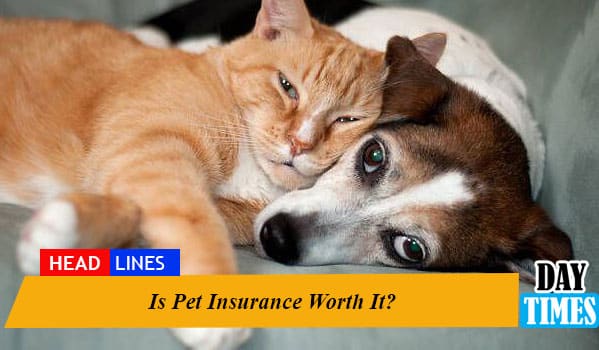If you are a pet owner, you know how much your furry friend means to you. You want to provide the best possible care for them, but sometimes unexpected accidents or illnesses can happen. This is where pet insurance comes in. But is it really worth it? In this article, we will explore the benefits and drawbacks of pet insurance to help you make an informed decision.
1. Introduction
As a pet owner, you want to ensure that your furry friend gets the best possible care. However, veterinary care can be expensive, especially in the case of accidents or illnesses. Pet insurance can help you manage the cost of unexpected medical expenses for your pet. But is it really worth it? In this article, we will explore the benefits and drawbacks of pet insurance to help you make an informed decision.
2. What is Pet Insurance?
Pet insurance is a type of insurance that covers the cost of veterinary care for your pet. Just like health insurance for humans, pet insurance requires you to pay a monthly or yearly premium in exchange for coverage. Depending on the plan, pet insurance can cover a range of veterinary expenses, including accidents, illnesses, and routine care.
3. How Does Pet Insurance Work?
Pet insurance works by reimbursing you for a portion of your veterinary bills. When you take your pet to the vet, you will pay the full cost of the visit upfront. Then, you will submit a claim to your pet insurance provider. If the expense is covered under your policy, your provider will reimburse you for a portion of the cost.
4. What Does Pet Insurance Cover?
Pet insurance can cover a range of veterinary expenses, including:
- Accidents, such as broken bones, poisoning, and ingestion of foreign objects
- Illnesses, such as cancer, diabetes, and allergies
- Routine care, such as annual checkups, vaccinations, and teeth cleaning
It’s important to note that not all pet insurance plans are created equal, and coverage can vary widely between providers. Make sure to carefully review the details of any policy before purchasing.
5. Types of Pet Insurance
There are two main types of pet insurance: accident and illness coverage and wellness coverage. Accident and illness coverage covers unexpected veterinary expenses, while wellness coverage covers routine care such as checkups and vaccinations.
6. Benefits of Pet Insurance
There are several benefits of pet insurance, including:
- Peace of mind: Pet insurance can provide peace of mind knowing that you are prepared for unexpected veterinary expenses.
- Cost-effective: Pet insurance can be cost-effective in the long run, especially if your pet experiences a serious illness or injury.
- More treatment options: With pet insurance, you may have access to more treatment options, including expensive procedures or surgeries.
- No need to choose between finances and your pet’s health: With pet insurance, you won’t have to choose between financial concerns and your pet’s health.
7. Drawbacks of Pet Insurance
While there are many benefits to pet insurance, there are also some drawbacks to consider, including:
- Cost: Pet insurance can be expensive, especially for comprehensive coverage.
- Coverage limitations: Not all procedures or treatments may be covered under your pet insurance policy.
- Pre-existing conditions: Many pet insurance policies do not cover pre-existing conditions.
8. Factors to Consider Before Buying Pet Insurance
Before purchasing pet insurance, there are several factors to consider, including:
- Your pet’s age: Older pets may have a harder time getting coverage or may require higher premiums.
- Your pet’s breed: Certain breeds may be more prone to certain health conditions, which may affect coverage and premiums.
- Your budget: Pet insurance can be expensive, so it’s important to consider your budget before purchasing.
- Your pet’s health history: If your pet has a pre-existing condition, it may affect coverage or premiums.
- Your risk tolerance: If you are comfortable with assuming the risk of unexpected veterinary expenses, you may not need pet insurance.
9. Alternatives to Pet Insurance
If pet insurance is not right for you and your pet, there are alternatives to consider, including:
- Self-insuring: You can set aside money each month to cover unexpected veterinary expenses.
- Care credit: Care credit is a credit card designed specifically for healthcare expenses, including veterinary care.
- Discount plans: Some providers offer discount plans for routine care, such as vaccinations and checkups.
10. How to Choose the Right Pet Insurance
When choosing pet insurance, it’s important to do your research and compare policies. Some factors to consider include:
- Coverage: Make sure the policy covers the veterinary expenses you are most concerned about.
- Cost: Consider the cost of the policy, including premiums, deductibles, and co-pays.
- Provider reputation: Research the provider’s reputation for customer service, claims processing, and overall satisfaction.
- Exclusions: Make sure you understand any exclusions or limitations in the policy.
- Waiting periods: Check the policy for waiting periods before coverage begins.
11. Conclusion
Pet insurance can provide peace of mind and financial security when it comes to unexpected veterinary expenses. However, it’s important to carefully consider the benefits and drawbacks of pet insurance, as well as your personal situation, before making a decision. By doing your research and comparing policies, you can choose the right pet insurance for you and your furry friend.


